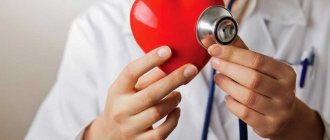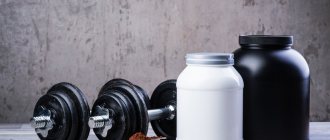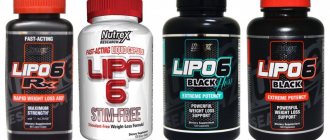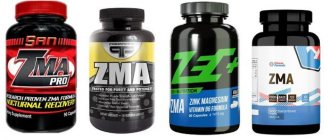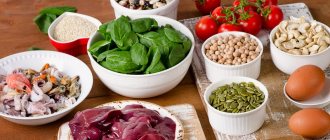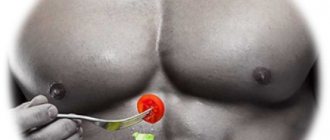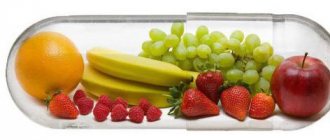Nutrition and dietVitamins and microelements
Iron is a trace element that affects health and athletic performance. The danger is not only iron deficiency, but also its excess.
Author:
Ciaran Ferman
Your body needs a strictly defined amount of iron for the coordinated functioning of all organs and systems. This is especially critical for athletes, but not everyone receives the microelement in sufficient quantities. Should you take iron supplements? This guide has everything you need to know.
What is iron, what are its functions?
Iron is a trace element that is involved in the transport of oxygen through the blood and muscles, the creation of red blood cells (erythrocytes), intracellular synthesis and energy consumption.
Iron is part of the heme, a prosthetic group (non-protein part) of the hemoglobin molecule. It is this compound in red blood cells that carries oxygen from the lungs throughout the body. Iron is also part of myoglobin, which stores and transports oxygen in muscle cells.
So, high levels of iron are necessary for the delivery of oxygen throughout the body and for cells to obtain energy in oxidative reactions.
The role of iron in the human body
Despite the fact that our body contains a very small amount of this mineral, the role of iron in the human body is very large. Most of the total volume is contained in hemoglobin, about 20% is deposited in depots, which are located in the liver, spleen, bone marrow and muscles. Approximately the same amount of the substance takes part in the synthesis of cellular enzymes. The main function of iron in our body is to participate in the process of hematopoiesis; it is also an indispensable component of immunobiological processes and is necessary for oxygen metabolism. Iron is necessary for the synthesis of hemoglobin, which transports oxygen from the lungs to tissues and organs. The optimal level of the mineral in the body is the key to healthy skin, as well as protection against excessive fatigue and drowsiness.
This substance has other functions in our body:
- an essential trace element that ensures cellular respiration;
- regulates cellular and systemic metabolic processes;
- fights peroxidation products;
- participates in the transmission of nerve impulses;
- promotes normal functioning of the thyroid gland;
- ensures optimal brain function;
- has immunomodulatory properties.
How much iron do you need?
The recommended daily allowance (RDA) for an adult male aged 19 to 50 years is 8 milligrams. The RDA for women of childbearing age is 18 mg/day. The difference is due to monthly blood loss during menstruation. For this reason, the RDA for women who have reached menopause is reduced to 8 milligrams.
Most people can meet their daily iron requirement through a healthy diet that includes whole, natural foods.
Causes of iron deficiency anemia[edit | edit code]
When deciding on the use of iron supplements for the treatment of anemic conditions in athletes, we would first of all like to dwell on the possible mechanisms for the occurrence of such conditions.
The probable causes of iron deficiency anemia in athletes are: excessive loss of iron during sweating, excessive blood loss in the gastrointestinal tract, as well as during urination as a result of hematuria, hemoglobinuria, or the simultaneous manifestation of both pathological conditions [2] (Frederickson et al., 1980 , 1983; Clement, Asmundson, 1982; Nickerson et al., 1985; Hawely J., 2000). Hemoglobinuria can be caused by the accelerated development of intravascular hemolysis. For some female runners, iron deficiency is associated with excess blood loss during menstruation. Another reason is a violation of the gastrointestinal absorption of iron consumed with food. The possibility of iron deficiency due to the use of unbalanced diets has been considered, as athletes undergoing intense training tend to consume high-carbohydrate vegetarian-type diets, which are usually low in iron. In addition, some elite athletes, especially female runners, may be severely restrictive or suffer from disordered eating.
L.S. Voznesensky et al. (1976) regard the decrease in hemoglobin concentration in the blood of athletes as a reflection of a systemic change in protein metabolism in response to additional loads. Currently, there is a consensus: anemia in athletes is caused by the same mechanisms as in non-sports members of the population; there is no such thing as “exercise anemia.”
The prevalence of iron metabolism disorders among highly qualified athletes of different sexes is shown in Table. 12.
Table 12 Prevalence of iron metabolism disorders among professional athletes, %
(quoted from footballmed.com/articles/63.html, N.D. Durmanov “Anemia in professional athletes”)
| Type of iron metabolism disorder | Men | Women |
| Iron deficiency conditions : | 51 | 79 |
| latent iron deficiency | 27 | 37 |
| Iron-deficiency anemia | 24 | 42 |
| Conditions with excess iron : | 3,3 | 1,7 |
| sideroblastic anemia | 1,7 | 0,4 |
| thalassemia | 0,9 | 0,7 |
| hemochromatosis | 0,7 | 0,6 |
Causes of iron deficiency[edit | edit code]
Possible causes of iron deficiency
related to professional sports activities are grouped by N.D. Durmanov as follows:
1. Increased iron requirements:
- increased amount of myoglobin, hemoglobin; growth of muscle mass, body weight, blood volume.
2. Increased iron loss:
- microhematuria due to renal ischemia;
- intravascular hemolysis due to mechanical damage to red blood cells in the vessels of the feet;
- microblood loss through the intestines.
The approximate frequency of causes of iron deficiency in athletes is presented in table. 13.
Estimated frequency of causes of iron deficiency in athletes
, (quoted from footballmed.com/articles/63.html, N.D. Durmanov “Anemia in professional athletes”)
| Causes of iron deficiency | Teenagers | Adults |
| Menstrual blood loss | 38 | 45 |
| Myomatous blood loss | 0 | 5 |
| Consumption by intestinal flora | 2 | 2 |
| Redistribution during infection, tumors | 1 | 3 |
| Intraoperative blood loss | 5 | 2 |
| Hematuria | 0 | 6 |
| Mechanical hemolysis | 0 | 9 |
| Malabsorption | 2 | 2 |
| Nutritional deficiency | 39 | 8 |
| Gastrointestinal blood loss: peptic ulcer | 10 | 2 |
| intestinal microbleedings | 0 | 9 |
| haemorrhoids | 0 | 5 |
| Other bleeding specified | 1 | 1 |
| Other bleeding, unspecified | 2 | 1 |
What happens with iron deficiency?
Iron deficiency can lead to iron deficiency anemia, in which defective or damaged red blood cells circulate in the blood.
Because iron helps transport oxygen, symptoms of anemia include decreased energy levels, poor physical performance, sensitivity to cold temperatures, and even a pale, sickly appearance.
Lack of iron during pregnancy can be dangerous for both mother and baby. Fortunately, doctors remain highly vigilant in this regard. They monitor iron levels throughout pregnancy and take timely measures to prevent deficiency.
Iron deficiency: who is at risk?
Iron deficiency is one of the most common deficiency conditions, particularly among women.
We must remember that heme iron (from meat) is absorbed much better than non-heme iron (from plant products). Consequently, vegans, vegetarians and people who for some reason consume little meat products are at risk of developing iron deficiency.
Interestingly, physical activity that involves the impact of the foot on the ground is the main cause of damage or destruction of red blood cells. This means that long-distance runners are also at high risk of developing iron deficiency.
Heavy strength and functional training can cause your red blood cell count to increase, which means you'll need more iron to create them. Iron is lost through sweat; The more an athlete sweats, the more likely they are to be at risk (although this is highly variable).
During the pre-competition period, bodybuilders usually sharply reduce caloric intake, but at the same time try to maintain or even increase the volume of their training load. Unfortunately, during this time, many bodybuilders rely solely on the basic food set of chicken, rice and broccoli.
Not only is it not very pleasant to eat the same food 6 times a day, giving up red meat in combination with additional training (athletes often add cardio in this phase of the training cycle) can result in the disappearance of essential microelements from the diet, including iron . All athletes and casual sports enthusiasts should make sure they are getting enough iron.
Sports anemia[edit | edit code]
Analyzing the results of our own observations, first of all I would like to draw attention to the unjustifiedness of combining all cases of anemic conditions in athletes into the group of sports anemia, i.e. a decrease in hemoglobin content in the blood, initiated (regardless of the mechanisms involved) precisely by physical activity.
First of all, “traditional” causes of chronic iron deficiency anemia and chronic foci of infection in the body must be excluded. In isolated cases, hemolytic anemia may be suspected due to: a) a hereditary defect in the synthesis of one of the globulin chains (thalassemia minor - a heterozygous form of the disease); b) hereditary disorder of the structure of globin chains (heterozygous form of sickle cell anemia) and c) vitamin E deficiency. It should be borne in mind: thalassemia minor and the heterozygous form of sickle cell anemia are almost asymptomatic, and the second manifests itself only in conditions hypoxia.
According to data given in the Handbook of sports medicine and science. Running" edited by JA Hawley (2000), the level of ferritin - still one of the most reliable markers of iron stores in the body - cannot serve as an accurate indicator of iron in individuals who exercise on a regular basis. Low blood ferritin concentrations (less than 30-50 ng/ml) are reported in approximately 20% of male long-distance runners and 60-80% of female runners.
An almost complete absence of iron reserves in the bone marrow was found in different groups of long-distance runners, all of whose members had normal hemoglobin levels in the blood. It was previously thought that the low serum ferritin levels and lack of bone marrow iron in all of these runners indicated that they were severely iron deficient, even if they were not anemic. However, recent research in this area has not confirmed this: runners with low serum ferritin levels and no iron in the bone marrow, however, have a normal rate of red blood cell production, the quality of which was also normal.
This fact can be explained by the destruction of red blood cells in the feet during running, i.e. Athletes accumulate more iron reserves in the liver than in the bone marrow, unlike people who lead a sedentary lifestyle. It follows that traditional methods used to diagnose iron deficiency in non-runners should not be used in relation to runners.
These studies allow us to draw conclusions about treatment with iron supplements. They should only be used on runners whose blood hemoglobin levels are below normal. In the absence of anemia, characterized by low blood hemoglobin levels, low serum ferritin levels in runners can likely be ignored.
In our opinion, paradoxically, anemia in conditions of sports activity may have a certain analogy with true iron deficiency anemia in pregnant women as understood by D.Ya. Dimitrov (1980).
First of all, the author emphasizes that two factors are decisive in the regulation of iron absorption: the size of iron reserves and the activity of erythropoiesis (each stimulation of erythropoiesis leads to increased iron absorption, while when erythropoiesis is limited or inhibited, iron resorption decreases). Particular attention is paid to the lack of correlation with the level of erythrocyte hemoglobin, serum iron and transferrin. So, if, against the background of a decrease in iron reserves (quantitative factor), the resorption of the latter does not increase (we observe this in athletes when an iron deficiency state occurs while taking iron supplements), then there is a violation of the functional state of the bone marrow (qualitative factor), leading to limiting the absorption and utilization of iron. At the same time, in the above work it is noted that with primary quantitative disorders, the number of erythrocytes decreases, but with primary qualitative changes, the number of erythrocytes does not decrease significantly (a similar picture was registered in athletes).
Very captivating in theory D.Ya. Dimitrov and the opportunity to explain why exactly athletes with a lower “working” level of hemoglobin (we associate this with an increase in the volume of circulating blood mainly due to the plasma part) develop iron deficiency. The author considers hyperplasma as a borderline state, located on the verge between normality and pathology, an almost physiological phenomenon and at the same time representing a prestage of hematopoiesis disorders, a mild form of an anemic state.
In general, the problem of the pathogenesis of sports anemia certainly requires further research involving the study of a number of causative factors. Among them, a special place should be occupied by the functional state of the adrenal cortex, its role in the regulation of the morphological composition of the blood, which is attracting increasing attention from specialists.
How can iron supplements help or harm?
If your body is low on iron, supplementation can help improve your health, replenish energy, and improve overall physical performance. Athletes who are deficient in the micronutrient will likely see noticeable improvements after taking supplements.
On the other hand, if you have enough iron in your diet but are hoping to get an extra boost from supplements, you're out of luck. Iron will only benefit those who have a microelement deficiency. If you're already getting enough of it, you probably won't see a difference.
For beneficial properties to turn into harm, you do not need a large excess of iron. It is highly recommended that you consult with your doctor, have your iron levels checked in your blood, and see if you should take iron supplements.
Iron deficiency[edit | edit code]
According to modern concepts, iron deficiency
- not only one of the most common causes of anemia [1], the frequency of iron deficiency anemia reaches 98% among all anemias), but also plays an extremely important role in the complex of factors that cause dysfunction of the immune system.
Iron-rich foods
Established
: low iron content in the body leads to a weakening of the function of the immune system: the saturation of tissues with granulocytes and macrophages is reduced, phagocytosis, the response of lymphocytes to stimulation by antigens, and the formation of antibodies are inhibited. The main cause of immune deficiency in iron deficiency is the low activity of enzymes, proteins and the receptor apparatus of the cells in which it is included.
Of particular note
: a decrease in iron levels in the body causes a sharp inhibition of the cytotoxic function of killer cells; along with this, the production of interferon by macrophages decreases.
What foods contain this microelement?
The easiest ways to get iron are from red meat (about 8 milligrams in an 8-ounce steak) and certain seafood, such as shellfish (24 milligrams in 85 grams) and oysters (10 milligrams in 85 grams).
Non-heme iron is found in plant foods such as legumes, whole grains, and green leafy vegetables. The bioavailability (percentage the body absorbs) of non-heme iron is lower than heme iron, but if you eat both types of iron with vitamin C, you can absorb much more. Try orange juice with oatmeal, tomatoes in a salad, or squeeze lemon juice on oysters.
If you eat a lot of red meat, fish, legumes, whole grains, and green leafy vegetables, you likely have enough iron in your diet. Vegetarians will have to make a little more effort, but it is quite possible to get the required amount of the micronutrient from plant sources in combination with vitamin C.
In what forms is this micronutrient available?
Most people are able to meet their body's iron needs through food. But if your doctor recommends taking medications, you can get the micronutrient with a multivitamin complex or as a stand-alone supplement in the form of a gel or capsule (both forms are effective). It is better to take iron on an empty stomach, this increases its absorption.
The dose of the drug will be determined by the degree of deficiency, the energy needs of the body (intensity of work and training) and the amount of iron in your diet.
Iron Supplementation - Final Thoughts
- Although it is always best to get iron from food sources, in some cases iron supplements may be necessary.
- Iron supplements can help correct nutritional deficiencies, promote a healthy pregnancy, and increase energy levels. It also boosts immune function and improves sleep quality.
- There are several types of supplements available in capsule and liquid form, including ferrous sulfate, ferrous citrate, and ferrous gluconate.
- The recommended dosage of iron may vary for men, women, children and people with anemia.
- Iron supplements can cause side effects such as abdominal pain, nausea, vomiting, constipation and diarrhea.
- Taking dietary supplements can help prevent side effects, but may also reduce the effectiveness of your supplement.
Interaction of iron with other substances
Coffee
Coffee may reduce iron absorption if drunk during or within an hour after a meal. But if you drink coffee an hour before a meal, it will not affect the absorption of iron. Enjoy a cup of aromatic drink before lunch, which includes meat or fish, and you are guaranteed not only a good mood, but also a high level of iron!
Hemodialysis
Erythropoietin is a hormone that stimulates the formation of red blood cells and is synthesized in the kidneys. Hemodialysis patients often suffer from impaired renal function with anemia as a side effect. In addition, medications prescribed to dialysis patients, along with some ancillary medications, may impair iron absorption. Increasing microelement consumption in such a situation is completely justified.
Medicines
Many medications affect iron absorption. Among the most common:
- Angiotensin-converting enzyme (ACE) inhibitors, which are taken for high blood pressure.
- Omeprazole, ranitidine (ulcers, heartburn, gastrointestinal disorders).
- Tetracycline antibiotics (Vibramycin, Minocycline, Doxycycline), fluoroquinolones (Ciprofloxacin, Norfloxacin, Levofloxacin).
Iron: beneficial properties
Iron is an essential mineral for good health and fitness. But both deficiency and excess of iron in the body can be dangerous. Let's find out why.
Your body needs enough iron to function optimally. Iron is an extremely important mineral for people who exercise regularly, but it is not uncommon for athletes to suffer from iron deficiency. Perhaps you should take an iron supplement too? Before we begin, let's take a closer look at the benefits and side effects of consuming iron.
The role of iron in the body
Iron is a trace element that in the human body is responsible for the transport of oxygen in the blood and muscles, participates in the formation of red blood cells and promotes the release of energy from cells.
Heme, the main component of the hemoglobin molecule, which is part of red blood cells, is responsible for the transfer of oxygen from the lungs throughout the body. Hemoglobin contains about 70% of all iron in the body. Iron is also contained in myoglobin, which is responsible for transporting oxygen to the muscles.
Thus, the need to maintain sufficiently high iron levels is due to the need to transport oxygen throughout the body to provide it with energy.
How much iron do you need?
The recommended daily allowance (RDI) for iron for adult men (19-50 years) is 8 mg. The RDA for adult women is 18 mg. This large difference is due primarily to monthly blood loss through menstruation in women. For the same reason, the RDA of iron for postmenopausal women is reduced to 8 mg.
The daily requirement for iron is easy to meet without taking supplements. Just eat a healthy diet and include plenty of whole, unprocessed foods.
What happens if you don't get enough iron?
Insufficient iron intake can lead to iron deficiency anemia, or more simply, red blood cell damage and dysfunction.
Because iron is responsible for transporting oxygen, the primary symptoms of anemia include decreased energy levels, poor physical performance, intolerance to cold temperatures, and a pale, sickly appearance.
If women don't get enough iron during pregnancy, it can be dangerous for both mother and baby. Fortunately, doctors are aware of this and usually closely monitor and regulate iron levels during pregnancy.
Those at increased risk of iron deficiency:
· Vegans, vegetarians and people who eat little meat
· Strength athletes
Long distance runners
· Bodybuilders in the cutting phase
In what cases can iron supplements help and in what cases can they harm?
If you suffer from iron deficiency, taking a supplement to normalize your blood iron levels can help you improve your health, energy levels, and physical performance. Athletes with low iron levels will likely notice a significant increase in performance when supplementing.
But if you're already consuming enough iron and are simply hoping to get extra benefits from taking a supplement, you're out of luck. The positive effects of iron supplements will only be felt by people who are deficient in iron; others will most likely not even notice the difference.
Just slightly exceed your optimal iron intake and your health will deteriorate dramatically. Therefore, before taking supplements, it is highly recommended that you consult with your doctor to measure your blood iron levels and determine whether you truly need additional amounts.
Side effects of iron supplements
The maximum permissible daily dose of iron is 45 mg. Consuming more iron (usually through excessive or improper supplementation) can cause poisoning and is accompanied by symptoms such as nausea, diarrhea, dizziness and vomiting.
Iron in food
Heme iron is most easily obtained from foods such as red meat (a 250g steak provides about 8mg) and some seafood such as shellfish (100g provides 30mg) and oysters (100g provides 12mg).
Non-heme iron is found in plant foods, particularly legumes, whole grains and green leafy vegetables. Although the bioavailability of non-heme iron is much lower than heme iron, taking both types of iron along with vitamin C can help increase their absorption. Oatmeal with orange juice, tomatoes in a salad and a little lemon juice on oysters - all these combinations are not only tasty, but also healthy!
If you eat plenty of red meat, fish, legumes, whole grains and green leafy vegetables, you are likely to get enough iron. This is a little more difficult for vegetarians, but it is quite possible to meet the need for iron in food if you consume plant sources of iron in combination with vitamin C.
Iron Supplement Forms
Most people have no problem meeting their iron needs through food. But if your doctor recommends that you increase your iron intake, you can find it either in a multivitamin or as a stand-alone supplement in gel or capsule form (both forms are good). For optimal absorption, it is recommended to take iron supplements on an empty stomach.
The dose of the supplement is determined based on the degree of deficiency, energy needs (how often and intensely you exercise) and the amount of iron you get from food.
Interaction of iron with certain foods and drugs
Coffee
Coffee can reduce iron absorption if you drink it with a meal or within an hour after a meal. But drinking coffee an hour before meals has no effect on iron absorption. Drink a cup of aromatic coffee in the morning, eat a steak for lunch - and you will receive an invigorating boost of energy and an optimal dose of iron!
Dialysis
Erythropoietin, a hormone that stimulates the production of red blood cells, is secreted in the kidneys. The process of dialysis removes metabolic products and fluids from the body that the kidneys are unable to remove on their own. Dialysis is prescribed to people who suffer from kidney dysfunction, with severe anemia as a side effect. In addition, the diet prescribed to dialysis patients, along with certain medications, negatively affects the absorption of iron, so it is recommended to increase iron intake during this period.
Medications
Many medications negatively affect iron absorption. The most common:
Angiotensin-converting enzyme (ACE) inhibitors, which are taken for high blood pressure
· Most medications prescribed for ulcers, heartburn, and gastrointestinal disorders
Antibiotics, particularly tetracyclines or quinolones
Conclusion
Consuming enough iron is essential for health and physical performance. But this does not mean that you need to take supplements. Increased iron consumption is just as dangerous for the body as its deficiency.
Eat more leafy greens, meat, fish, legumes and whole grains and you'll get enough iron from your diet. If you are experiencing symptoms of iron deficiency or are considered high-risk, see your doctor to have your iron levels measured in your blood and take timely action as needed.
conclusions
There is no doubt that meeting the body's iron needs will benefit both health and athletic performance. But this doesn't mean you necessarily need to take nutritional supplements. Excess iron is also dangerous.
Eat more green vegetables, meat, fish, legumes and whole grains to ensure you have enough iron in your diet. If you experience symptoms of deficiency or are at high risk, consult your doctor and get an iron blood test.
Recommended preparations with iron
Optimum Nutrition Opti-Women
More than just a multivitamin. Women's formula for good health!
Twinlab Multi Mineral Caps
11 Key Minerals! Essential nutrients for overall health.
Twinlab Dualtabs
Long-acting multivitamins in a two-layer tablet! Completely covers the daily requirement of vitamins and minerals during increased stress.
Risks and side effects
Ideally, you should try to meet your iron needs primarily through dietary sources. Including a variety of iron-rich foods in your diet will help you meet your daily iron requirements. It will also increase your intake of other important vitamins and minerals.
Meat, poultry, legumes, nuts and seeds are some of the main sources of iron. However, it can also be found in a number of fruits and vegetables, including leafy greens, tomatoes and mulberries. Consuming foods high in iron along with foods rich in vitamin C can help effectively optimize iron absorption.
However, in some cases it may be necessary to take an iron supplement. When you start taking supplements, you may wonder: How soon after taking iron will I feel better? Unfortunately, many people also report feeling worse after taking iron supplements. Supplements may cause several side effects when taken on an empty stomach.
Some of the most common side effects of iron supplements include abdominal pain, nausea, vomiting, constipation and diarrhea. Other less common side effects include heartburn, change in urine color, and dark stools.
Taking the capsules with food is an easy way to prevent side effects associated with iron supplements. It's important to keep in mind that this may also reduce iron absorption and reduce the effectiveness of the supplement.

